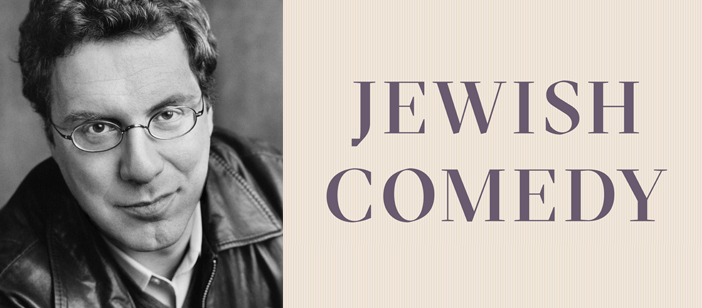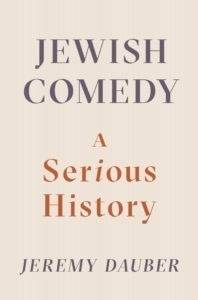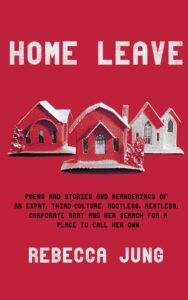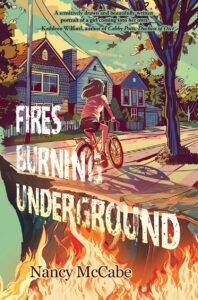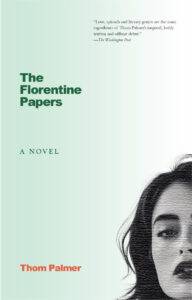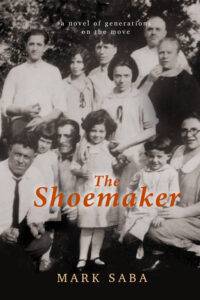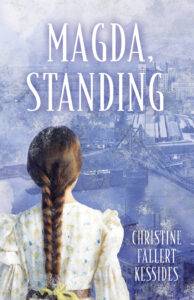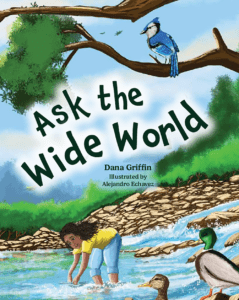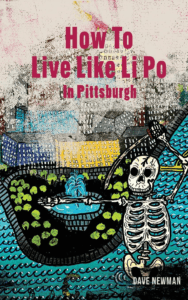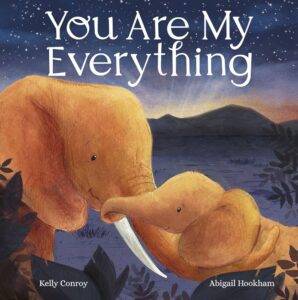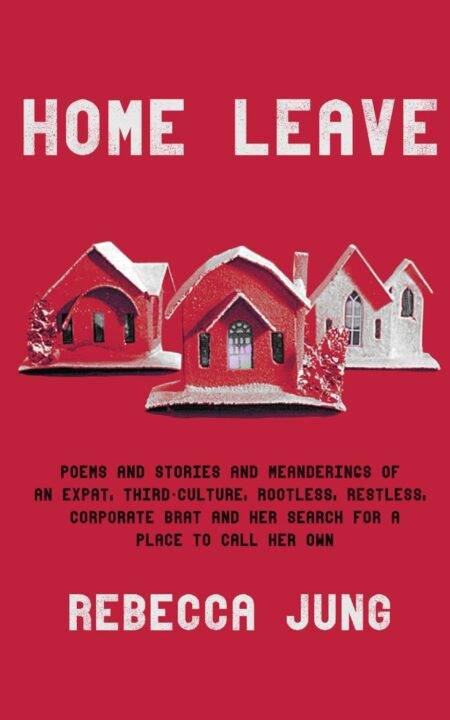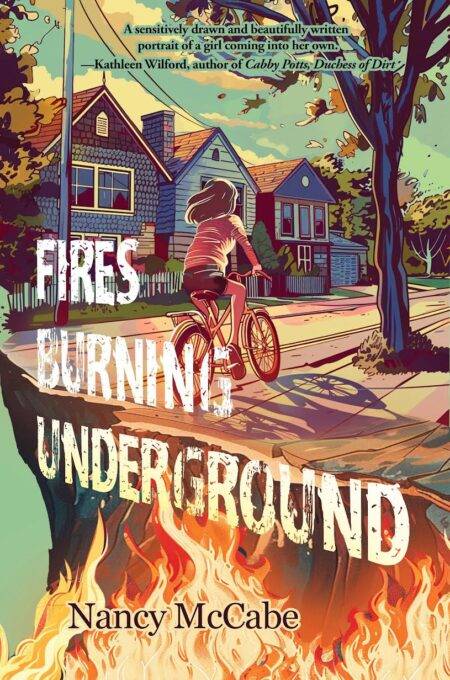From the Publisher: “In a major work of scholarship both erudite and very funny, Columbia professor Jeremy Dauber traces the origins of Jewish comedy and its development from biblical times to the age of Twitter. Organizing the product of Jews’ comic imagination over continents and centuries into what he calls the seven strands of Jewish comedy―including the satirical, the witty, and the vulgar―he traces the ways Jewish comedy has mirrored, and sometimes even shaped, the course of Jewish history. Persecution, cultural assimilation, religious revival, diaspora, Zionism―all of these, and more, were grist for the Jewish comic mill; and Dauber’s book takes readers on the tour of the funny side of some very serious business. (And vice versa.)”
Don’t miss out: Dauber will be visiting Rodef Shalom Congregation for a presentation, Q&A, and book signing on December 6th!
“This book is brilliant, endlessly revelatory, and Jeremy Dauber is that rare scholar and critic of real depth who doesn’t just make his subject accessible but animates it with the strength of his prose. He’s also one of the few writers I’ve encountered who can explain a joke without killing it. Bravo.” – Sam Lipsyte, author of The Fun Parts
“You want to hear a joke? I’ll tell you a joke. What’s green, is nailed to the wall, and whistles?”
“ … I give up.”
“A herring.”
“A herring’s not green!”
“Nu, you can paint it green.”
“But it’s not nailed to the wall!”
“You could nail it to the wall. If you wanted to.”
“ … But a herring doesn’t whistle!”
“All right, fine, so it doesn’t whistle.”
Or: “I just threw in that part to confuse you.”
Or: “All right, all right, so it’s not a herring.”
Or: “What am I, some kind of herring expert?” And on and on.
Is this joke, with its multiplicity of potential punch lines, a Jewish joke? And if so, why? Is it the syntax, with its faint Yiddish overtones? The slightly smart-ass sensibility? The comfort with its meta-jokiness, or, put another way, the subversive, near-parodic jab at the joke’s very form? Is it the particular refusal to provide the closure of a punch line, which could be taken, by an overzealous interpreter, as a metaphor for a Jewish historical consciousness ever in wait for messianic redemption? Or is it just a joke about herring? While you think about that, here’s a story about telling Jewish jokes. It’s an old story, a tale of the Preacher of Dubno, an eighteenth-century Hasidic rabbi famous for his apt and witty parables. Asked by an admirer how he always managed to find such an appropriate parable for each and every sermon, he answered, not uncharacteristically, with another parable. He told the story of a general visiting his troops who was struck by the results of their target practice: while most of the chalk circles drawn as makeshift targets on the wall revealed your regular variety of hit-or-miss results, one showed nothing but bullseyes—dead center, every shot. Gasping, the general demanded to see this marksman; he was even more surprised to discover the shooter was a Jew, a conscript forced to serve in the tsar’s army. He asked the Jew the secret of his success at arms. The Jew looked at the general as if he were cockeyed and responded: “Well, it’s very easy. First you fire the gun, and then, once you see where the bullet hole is, you draw a circle around it.” This had always been his technique, the maggid concluded: find a good joke or story, then figure out the larger point to draw from it.
A joke, a story: a statement of the problem, an approach to solving it. The problem, of course, is how to define and describe Jewish humor as it’s appeared in all its vast and variegated forms, from antiquity to yesterday. It’s hardly a new enterprise: there have been previous efforts, especially over the last few decades, and especially in America, where for a while it seemed like Jewish humor was American humor, or at least a pretty central part of it. Steve Allen, who should know, referred to American comedy in 1981 as “a sort of Jewish cottage industry,” putting Jewish participation in the field at approaching 80 percent. Some, though by no means all, of the approaches advanced in those efforts—arguments focusing on language, on sensibility, on history—are hinted at above.
But Jewish comedy tends to resist any single explanation. For every argument that’s been advanced as to what it really is, a bit of thought immediately reveals all sorts of exceptions and counterexamples—so much so that other equally perspicacious critics have thrown up their hands and suggested any attempt to define a specifically Jewish humor is doomed to futility. What’s more, the counterexamples themselves aren’t just indicative: they’re almost as vast and numerous as Jewish history itself, which covers a lot of ground, of both the actual and metaphorical variety.
The first time I walked into a Columbia University classroom to teach a course on Jewish comedy, Seinfeld had just gone off the air and Lena Dunham was entering high school. Judd Apatow was a respected television producer who no one outside the industry had ever heard of; and The Producers was still a movie, though there was talk of taking it to Broadway. I was a little nervous—a wet behind the ears twenty-seven-year-old assistant professor, lecturing to the largest class I’d ever had (apparently this was the kind of course that could attract a crowd), and I looked down at my notes to focus myself.
JEWISH COMEDY IS SERIOUS BUSINESS, I’d typed across the top. And so it is.
Over the last fifteen years or so of teaching the subject, lots of things have changed—although, thanks to the magic of syndication, Seinfeld never really did go off the air—and my syllabus has changed with it; but the top line hasn’t, along with the two central realizations that accompanied it.
First: the story of Jewish comedy was almost as massive in scope, as meaningful in substance, as Jewish history itself. In fact, I realized as I refined and developed the class, I was looking at a tradition. One with a history that could, and should, be studied. The story of Jewish comedy—what Jewish humor did and meant for the Jews at different times and places, as well as how, and why, it was so entertaining—is, if you tell it the right way, the story of American popular culture; it’s the story of Jewish civilization; it’s a guide to an essential aspect of human behavior. The fact that it also happens to be immensely entertaining to read, talk, and teach about is something of a bonus. But second: you can’t include everything, or even close. And so what you did include, I realized, had to work not just as a catalog of Jewish comedic production, but as an argument about what precisely Jewish comedy consists of. But even before you get to the cataloging and taxonomizing, there has to be some defining. Some inclusion and exclusion. Is the raw stuff of Jewish humor so capacious that it includes anything written by a Jew that might raise the faintest scintilla of a smile? Well, no. That would be, if not entirely ridiculous, at least ridiculously unhelpful. And literature is littered with brilliant comic thinkers who have warned against trying to define comedy too precisely: Samuel Johnson’s “Comedy has been unpropitious to definers” is the most famous, though I kind of prefer Swift’s rhyming couplet that “What Humour is, not all the tribe / Of logic-mongers can describe.” But this logic-monger would like to set two conditions nonetheless.
First: Jewish humor has to be produced by Jews. Maybe this is obvious, maybe it isn’t, but it’s part of our ground rules. How someone defines their Jewishness is a notoriously tricky subject—and, counter to some people’s thinking, has been since the beginning of Jewish history—but anyone who defines themselves as Jewish in any way is potentially part of our subject; others, even if sometimes mistaken for Jews (Charlie Chaplin, looking at you), are out. This said, comedy—especially in performance media—is of course often collaborative, and oftentimes a great work of Jewish comedy is crafted in concert with non-Jews; this material is very much included.
The second, trickier condition: Jewish humor must have something to do with either contemporary Jewish living or historical Jewish existence. Jewish history is very long, and Jewish life extraordinarily diverse, both geographically and culturally. It would be surprising if all examples of Jewish comedy looked the same—and they certainly don’t. But all those different times and places featured Jews commenting on what it meant to be a Jew in that culture. Usually, since most of Jewish history is diasporic history, as some kind of cultural outsider; but even if not, almost inevitably with that sidelong, half-immersed half-alienated glance so crucial to comedy. And frequently, they used those comic instincts to participate in long-running discussions that crossed centuries and continents about the meaning of Jewish history, theology, and destiny. Some of the examples I treat in the book I’ve just written about this subject (out this month) are explicit about those discussions; some assign them to the spheres of subtext or allegory; some are snapshots of a lived present whose movement into the past render them part of the discussion despite their apparent intent. But they’re all grist for the mill: as opposed to, say, a killer knock-knock joke written by a Silverstein or a Schwartz. (Unless, I suppose, there’s some fairly potent allegorical or metaphorical component within.)
That’s it. Certain subthemes will emerge again and again across the varying strands, of course—a particular playfulness with language, especially befitting the changing linguistic (and frequently multilingual) circumstances in which Jews lived; a contemplation of power and the lack of it; the relation of those two themes to questions of masculinity, along with the presence and absence of female voices. But those are more provocative preoccupations rather than essential parts of the definition. That still leaves a tremendous amount to wrangle, though, and the solution I’ve come up with follows the maggid’s approach: take a look at the long history of Jewish literature and culture, suss out the funny stuff that meets our definition, and then draw a defining circle around it—or, as I’m going to suggest, draw seven of them. Because, as it turns out, when you canvass the material—the entire breadth of the history of Jewish comedy, from the Bible to @crazyjewishmom’s Instagram account—and look for commonalities, seven major conceptual rubrics—seven strands—suggest themselves.
Immediately, I hear the cry: “Why not eight? Why not six? Your seventh is really a modified version of number four!” Look, this isn’t a precise science; the writers and performers who produce this stuff aren’t theoretical constructs, they’re working artists trying to get a laugh and use multiple techniques at once; and comedy tends to blur boundaries anyway. So these are guidelines, ideal types.
And here they are, without further ado:
- Jewish comedy is a response to persecution and anti-Semitism.
- Jewish comedy is a satirical gaze at Jewish social and communal norms.
- Jewish comedy is bookish, witty, intellectual allusive play.
- Jewish comedy is vulgar, raunchy, and body-obsessed.
- Jewish comedy is mordant, ironic, and metaphysically oriented.
- Jewish comedy is focused on the folksy, everyday, quotidian Jew.
- Jewish comedy is about the blurred and ambiguous nature of Jewishness itself.
So one strand of Jewish humor, for example, is its bookish, intellectual, witty side, appropriate for the self-proclaimed People of the Book, and bookish intellectual wits from Talmudic rabbis to Woody Allen can help trace our way through that aspect of the story. But Jewish humor can be vulgar as well—as raunchy and body-obsessed as any other group’s comedy—and figures as varied as medieval scatologists and Mel Brooks can help show the way there.
Drawing a circle, or seven circles, around the bullet hole, as the maggid’s marksman did, has its dangers along with its rewards. It creates an artificial sense of order where ragged chaos has bloomed; it runs the risk of being exposed as fallacious, as unfair or against the rules. On the other hand, doing it managed to impress both a Hasidic rebbe and a Russian general, bringing them together in shared admiration of an artist. So that’s something.
Jeremy A. Dauber is the Atran Professor of Yiddish Language, Literature, and Culture at Columbia University, and the author of several books on Jewish literature, including, most recently, Jewish Comedy: A Serious History.
Adapted from Jewish Comedy: A Serious History, by Jeremy Dauber. © 2017 by Jeremy Dauber. Used with permission of W. W. Norton & Company. All rights reserved.


